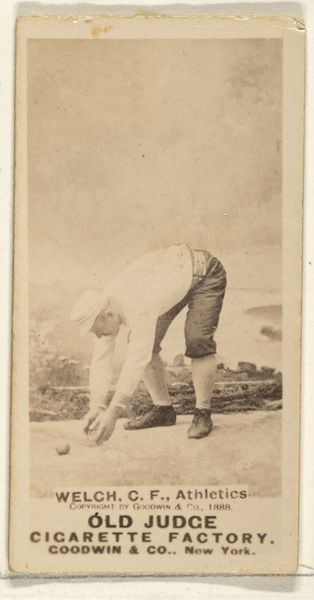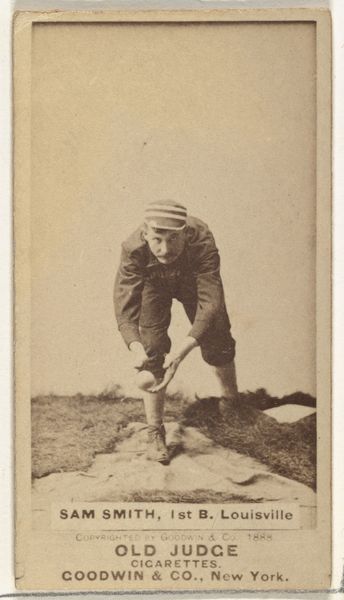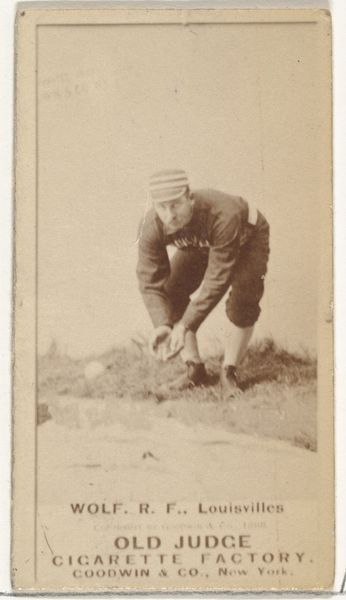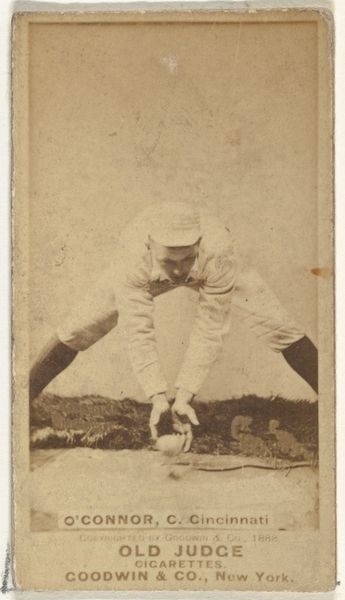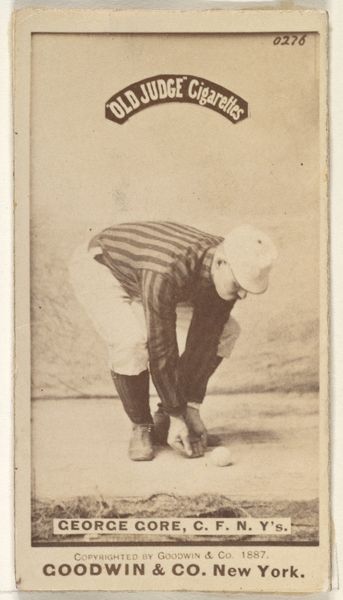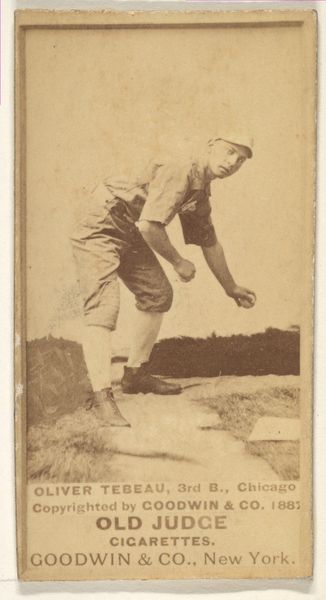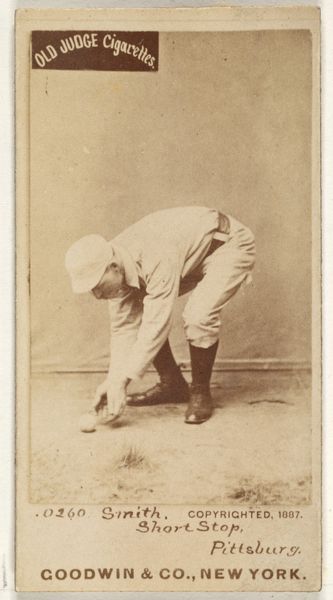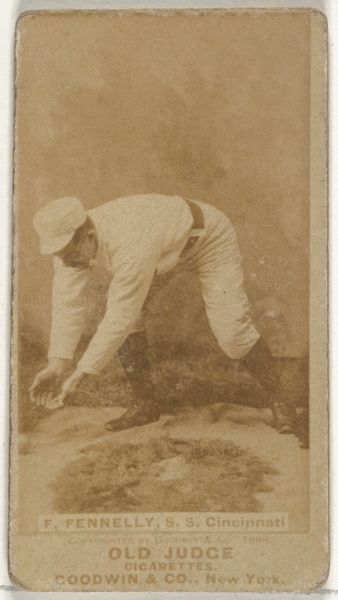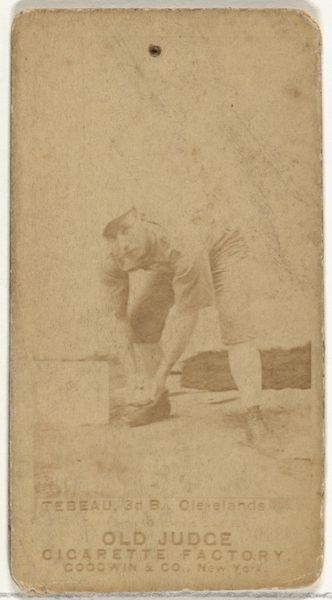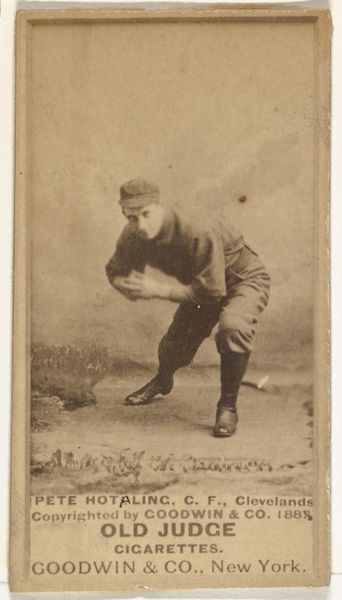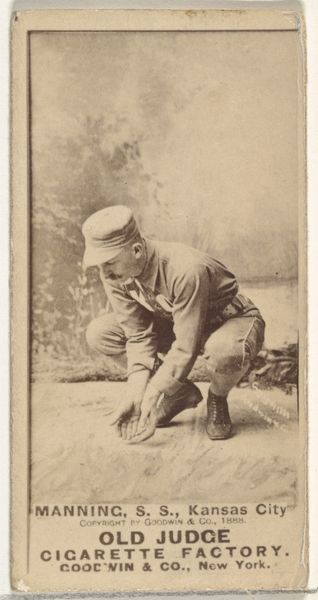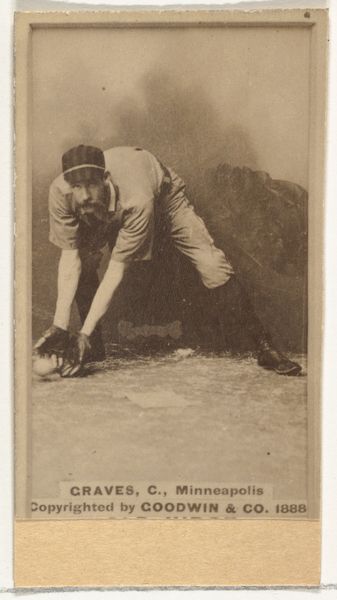
Welch, Center Field, Philadelphia Athletics, from the Old Judge series (N172) for Old Judge Cigarettes 1888
0:00
0:00
Dimensions: sheet: 2 11/16 x 1 3/8 in. (6.9 x 3.5 cm)
Copyright: Public Domain
Editor: This is "Welch, Center Field, Philadelphia Athletics," a photograph from 1888 by Goodwin & Company, originally a baseball card for Old Judge Cigarettes. It strikes me how much this image seems like an advertisement; it's literally branded as such. What do you see in its connection to consumer culture? Curator: As a materialist, I see more than just an advertisement. This card isn’t simply promoting cigarettes. It is illustrating how the burgeoning sports industry was becoming interwoven with mass-produced commodities and consumerism. The photograph's materiality itself– the paper stock, the printing process– reveals the era's industrial capabilities and distribution networks. Who consumed these cards and what value did they hold beyond their initial promotional purpose? Editor: That’s fascinating! So you’re suggesting we consider the means of production and circulation? Curator: Precisely! Consider the working-class audience for both baseball and affordable pleasures like cigarettes. These cards democratized art by making images accessible and collectable. It shifts our perception: it’s less about art, and more about cultural artifacts, commodities circulated as vehicles for consumerist ideologies. Editor: So, it's not necessarily about Welch himself or the aesthetics of baseball. Curator: Welch becomes a commodity; his image, like the cigarettes, becomes something to be consumed. It’s a social document, showing us the material culture of the late 19th century. And who benefits from that system? Editor: So, looking beyond the surface image of a baseball player to understand the production and consumption...that changes everything about how I perceive this. Curator: It shows the powerful relationship between material objects, popular culture, and emerging industrial capitalism.
Comments
No comments
Be the first to comment and join the conversation on the ultimate creative platform.
